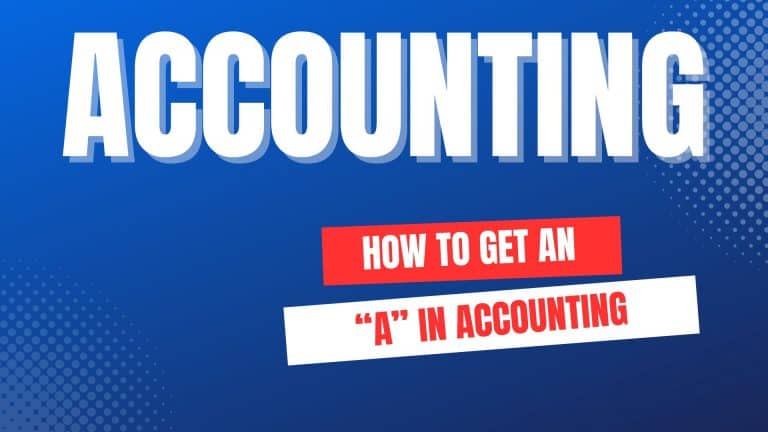A merchandising company buys and sells inventory. When sold, inventory costs become the cost of goods sold (COGS), which is usually a company’s largest cost.
This is part of Chapter 5 in Financial Accounting. This chapter includes:
For all the chapters, see The Ultimate Guide to Learn Financial Accounting
Contents
Inventory
A merchandising company sells inventory to its customers. Inventory is an asset on the company’s balance sheet. When sold, inventory becomes cost of goods sold (COGS) on the income statement.
Merchandising companies
Merchandising companies include the following:
- manufacturers: make the products that it sells
- wholesalers: buy from manufacturers and sell to retailers
- retailers: buy inventory to sell to the public
Inventory is an asset on the balance sheet. When inventory is sold, the cost is included on the income statement as cost of goods sold.
3 Stages of inventory
Manufacturers have inventory in three different stages of development:
- Raw materials inventory: goods used to produce finished products
- Work in process inventory: goods that are partially completed
- Finished goods inventory: goods that are finished and ready to sell
Cost of inventory
The cost of inventory includes the net cost to acquire the goods. This includes the sales price plus any freight costs or freight-in .
Purchases discounts and purchases returns reduce the cost of inventory.
Inventory systems
There are two inventory systems to account for inventory costs:
- Periodic inventory system
- Perpetual inventory system
In the periodic inventory system, cost of goods sold is calculated at the end of the period.
In the perpetual inventory system, cost of goods sold is calculated continually as the inventory is sold.
Inventory costing methods
When inventory is sold, its cost is included in the cost of goods sold. There are four cost methods for inventory:
- Specific identification
- First-in, first-out (FIFO)
- Last-in, first-out (LIFO)
- Weighted Average
Specific identification is used when each item can be individually identified by its cost. This method may be feasible for businesses with expensive products or small quantities.
Most companies do not use specific identification.
Companies can choose an inventory costing method that is not based on the physical flow of goods. The following three costing methods are inventory assumptions:
First-in, first-out (FIFO) assumes the first inventory items purchased are the first items sold.
Last-in, first-out (LIFO) assumes the last inventory items purchased are the first items sold. The LIFO method is allowed in U.S. GAAP. The LIFO method is not allowed in IFRS.
Weighted average calculates the cost by the average inventory value during the period.
| Inventory Method | Item Sold | COGS |
|---|---|---|
| FIFO | Oldest | Lower cost |
| LIFO | Newest | Higher cost |
| Weighted Average | Average | Average cost |
The inventory method directly impacts the cost of goods sold (COGS). COGS shows the costs of buying the goods sold by a company.
Sales – COGS = gross profit
Cost of goods sold
Cost of goods sold is the expense that shows the cost of selling inventory.
For example, assume a company sells 100 units of inventory costing $4 for $10 each. Sales are $1,000, and the cost of goods sold is $400.
The cost of goods sold equation is:
Beginning Inventory
+ Purchases
Goods Available for Sale
– Ending Inventory
Cost of Goods Sold
Lower of cost or net realizable value
Inventory is recorded at its original cost. This is called the cost concept.
One of the challenges in accounting for inventory is sometimes the inventory value is less than the original cost.
To determine inventory valuation, companies use a rule called lower of cost or net realizable value. This rule is also known as lower of cost or market.
Net realizable value (NRV) represents the estimated selling price minus any costs necessary to make the sale.
Companies must value inventory at the lower of its cost or the estimated net realizable value.
If NRV is lower than the inventory cost, a write-down is recorded as an expense on the income statement. This adjustment reduces inventory on the balance sheet and increases cost of goods sold on the income statement.
Inventory Errors
Inventory errors can significantly affect a company’s financial statements and financial health.
| Inventory Error | COGS | Net Income |
|---|---|---|
| Beginning Inventory Overstated | Overstated | Understated |
| Beginning Inventory Understated | Understated | Overstated |
| Ending Inventory Overstated | Understated | Overstated |
| Ending Inventory Understated | Overstated | Understated |
Accounting Chapters
Here are the accounting chapters in The Ultimate Guide to Learn Accounting:
- Introduction to Accounting
- Recording Business Transactions
- Adjusting Entries and the Accounting Cycle
- Accounting for Merchandising Activities
- Inventory and Cost of Goods Sold
- Cash and Internal Control
- Accounting for Receivables
- Accounting for Long-Term Assets
- Accounting for Current Liabilities
- Accounting for Long-Term Liabilities
- Corporations
- Statement of Cash Flows
- Financial Statement Analysis
- Managerial Accounting
- Job Order Costing
- Process Costing
- Activity Based Costing
- Cost Volume Profit Analysis
- Variable Costing
- Master Budgets
- Standard Costing
- Performance Measurement
- Relevant Costing
- Capital Budgeting
- Time Value of Money
See also Accounting Sample Exams.




